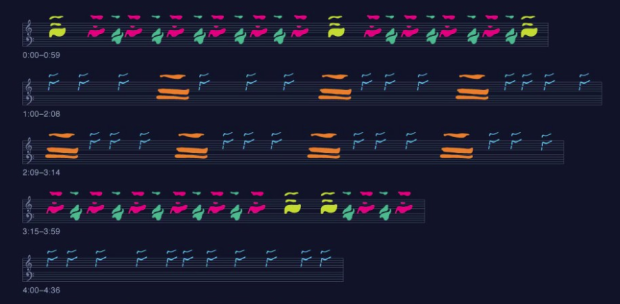It’s been known for decades that the sounds that whales make show patterns and have a certain musicality to them. David Rothenberg and Mike Deal talk about the history of visualizing and analyzing the sounds, along with a visual interpretation of their own.
There are eleven populations of humpbacks around the world, each covering their own ocean-sized territory. These populations each boast not only their own dialect of song, but also their own anthem of sorts — each whale singing the same sequence of the same sounds. But week-to-week, month-to-month, and year-to-year this song evolves, as the whales collectively create new phrases and patterns, totally in sync.
The uniqueness and creativity behind this animal’s music is hard to appreciate by listening to the sounds alone (let alone reading about it with words). Instead, we must turn to graphic representations of sound to visually emphasize the patterns — and bring them to life.
In the abstraction above, you can see the recurring sounds on a musical scale, but this video demonstrates it best. Part of the reason whale songs sound like noise to us is because they’re so slow and low. This is what happens when you speed up the songs.
[via Functional Art]


 Visualize This: The FlowingData Guide to Design, Visualization, and Statistics (2nd Edition)
Visualize This: The FlowingData Guide to Design, Visualization, and Statistics (2nd Edition)
